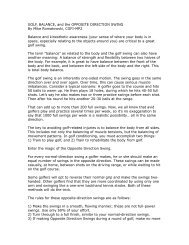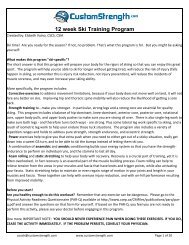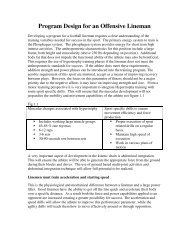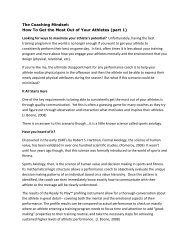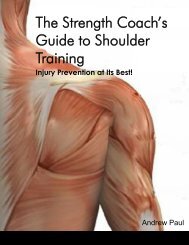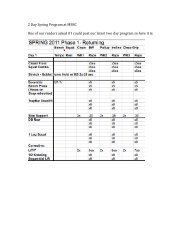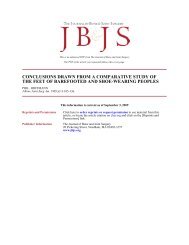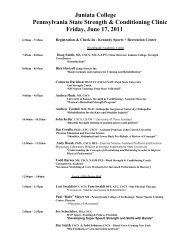Sprint Interval Training - “It's a HIIT - Strength Coach.com
Sprint Interval Training - “It's a HIIT - Strength Coach.com
Sprint Interval Training - “It's a HIIT - Strength Coach.com
Create successful ePaper yourself
Turn your PDF publications into a flip-book with our unique Google optimized e-Paper software.
work out time, one would want to be utilizing fat as the fuel of choice during this period to stay lean; SIT and <strong>HIIT</strong><br />
ac<strong>com</strong>plishes this very well. It is interesting to note that, for a single bout of maximal exercise, it has been shown<br />
that sixty seconds is optimal to maximize EPOC 68 . The reason for this finding is fairly straightforward. It is at the<br />
60‐second mark of an all out effort that humans accumulate the highest levels of lactic acid, which, in turn, inhibits<br />
further high‐intensity muscle contraction and the anaerobic production of more lactic acid. And, the amount of<br />
lactic acid produced during exercise is highly correlated with the magnitude of EPOC because much of the elevated<br />
oxygen consumption is for the processing of the lactic acid. It has also been shown that <strong>com</strong>pared to one<br />
continuous bout of exercise, the magnitude of EPOC is significantly elevated by splitting the equivalent exercise<br />
into two sessions 69 , supporting the benefits of interval training when the aim is to increase overall energy<br />
expenditure. Based upon this finding, it perhaps should not be surprising that prescribing exercise in several short<br />
bouts versus one long‐bout per day produced similar changes in cardiorespiratory fitness and had a trend toward<br />
greater weight loss 70 . It has further been demonstrated that following high‐intensity exercise, but not low‐<br />
intensity exercise, oxygen consumption remains elevated above resting levels at three hours post‐exercise; further,<br />
at this 3‐hour time point, the rate of fat oxidation was higher after high‐intensity exercise as <strong>com</strong>pared to low‐<br />
intensity exercise 71 .<br />
As it turns out, the lactic acid produced from high‐intensity anaerobic exercise is more than the waste<br />
product it was once thought to be. It is used as a fuel, a buffering aid and, of immense importance, a likely<br />
signaling molecule 72‐74 . At high levels, lactic acid is correlated with powerful anabolic metabolites such as<br />
testosterone and human growth hormone (HGH) 75‐77 , which further direct metabolism toward a strong and lean<br />
physiology. Both EPOC and these hormonal messengers persist long after the exercise has ended, which helps<br />
explain why SIT is more effective for fat loss than LMICT, despite when sometimes having a lower caloric<br />
expenditure than a LMICT session 78‐80 . When considering the effect of exercise on body <strong>com</strong>position, one also has<br />
to realize how hormones work when alone or in the presence of other hormones. Both <strong>HIIT</strong> and LMICT produce<br />
cortisol which, when alone, can be catabolic to the body as well as decrease lipolysis and, along with insulin,<br />
facilitate lipid accumulation by expressing lipoprotein lipase (LPL) 81, 82 . However, unlike with LMICT, the increases<br />
21



